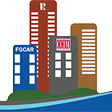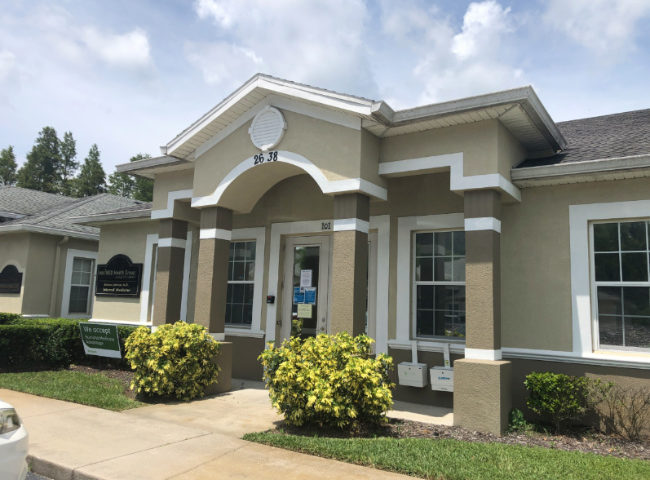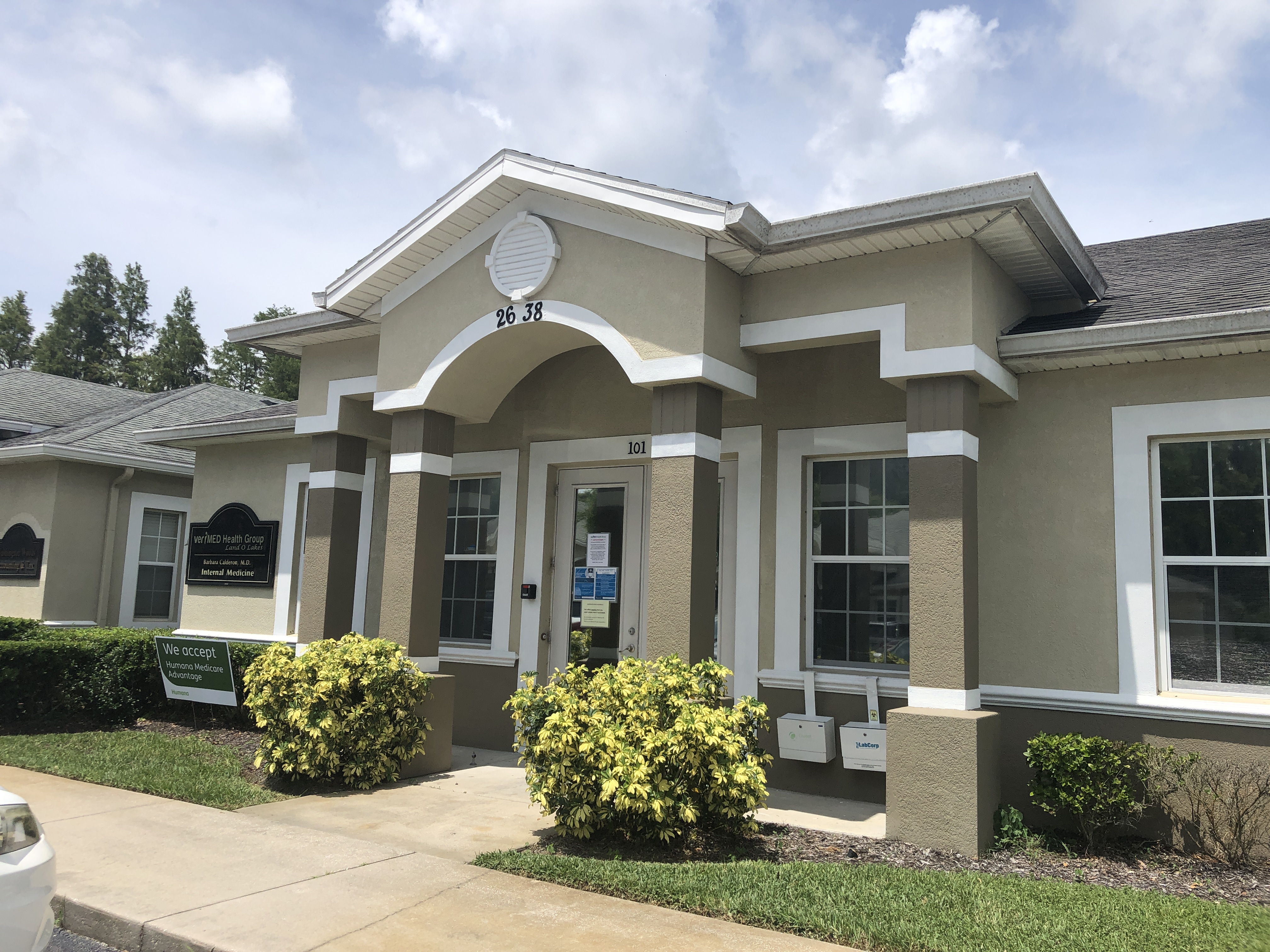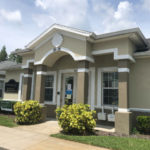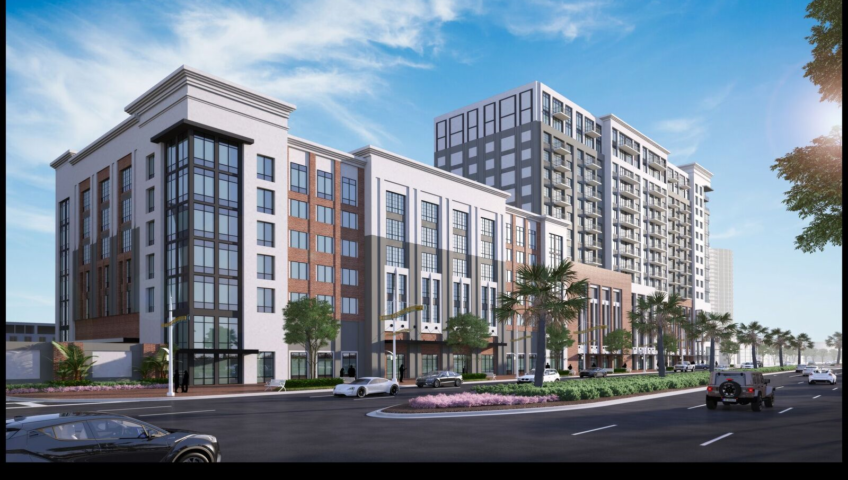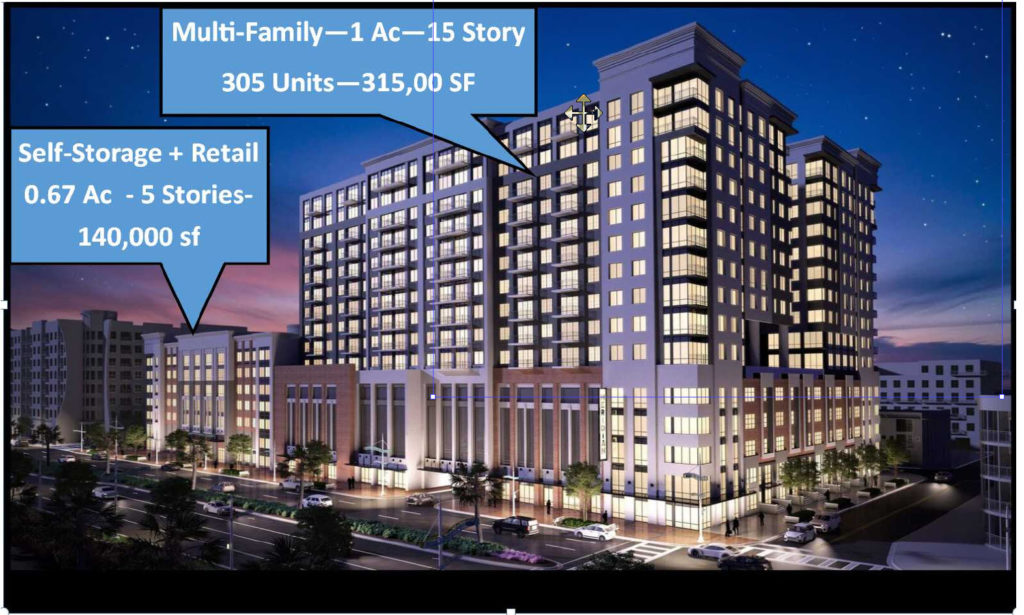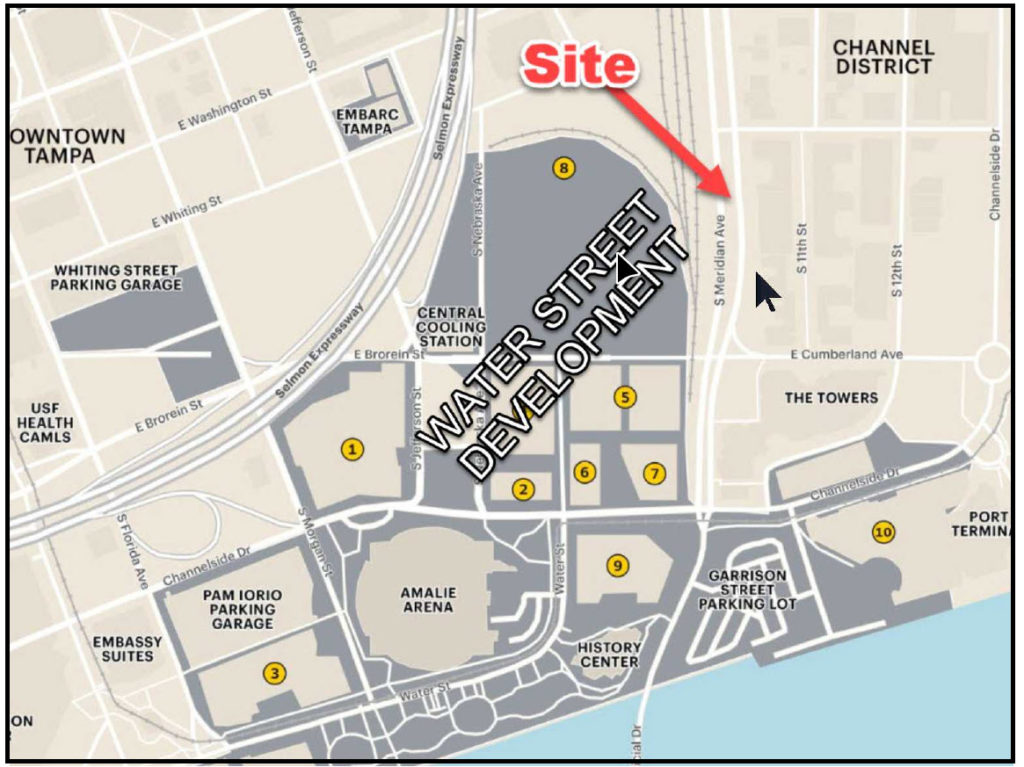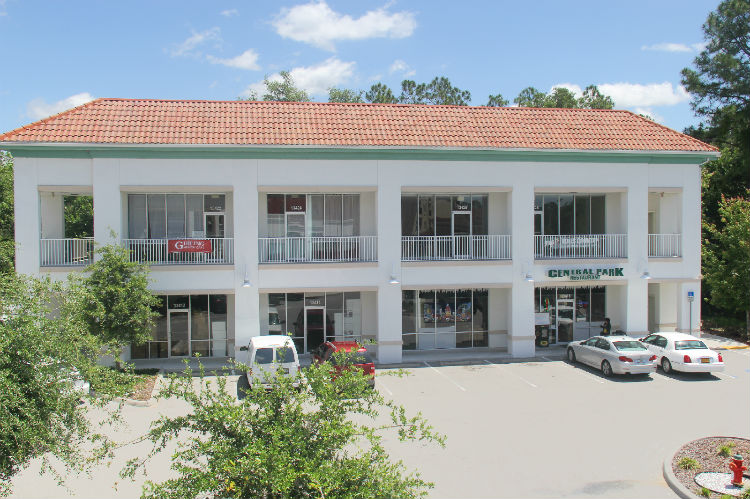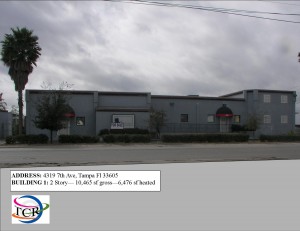I have been working with a new client, a start-up high tech company that will be located in Tampa. From the onset, something was different about this company. They wanted space that is high tech and modern but had no enthusiasm for the new first generation space in office parks that is readily available. My client told me that they had selected Tampa because they wanted to create a work environment that would attract young high tech workers.
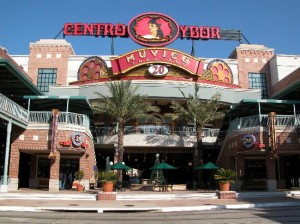
After a few weeks of concentrated searching, we honed in on a few spaces in Ybor City which began to look more and more appealing. This old section of Tampa was formally the cigar manufacturing center and is now more known for its night life. In this old part of Tampa we found several spaces where the complete renovations and had created modern work spaces that exuded charm. Eventually a lease was executed on an 8,000 sf space. This was a start-up company with no employees, yet the selected space was not the cheapest space we found. Nor was it the space that was quiet or offered the most parking.
I was curious enough to research further. It seemed odd that they would choose Ybor City for its start up high tech operation. Why after all would they choose a location that could have parking issues? Why would they pay more for office space in Ybor City when there is so much less expensive office space available now on the market? On further examination this is not strange at all. It is part of trend that is sweeping across America
My client is developing some really cool products. One concept is you can start to listen to your music on your computer, then move to your car the song will pick up just where the computer left off. Go super marketing or jogging and your Ipod will remember where the car audio system left off on the same song. You never miss or repeat an unnecessary beat. My client is in the knowledge industry . The employees of the high tech knowledge industry are different from the workers of the 80’s and 90’s. They are called the millennium generation. They thrive on stimulation and are constantly texting, emailing, facebooking while they talk, walk and do their work. They grew up multi-tasking. I think of them like molecules in a box. Shake the box and the bouncing molecules excite and infect one another with creative energy. These new workers require a new kind of work environment.
In the 80s and 90’s and even the first decade of this century, the trend was to build office parks out in the suburbs. The philosophy was take the office to the people and give them a tranquil, civilized environment. Place this millennium generation in isolated environments and their creativity withers and dies. The optimum location for these new millennium workers is an energetic urban setting or in the hip urban fringe. They need to be able to work all hours of the night; To walk out the door anytime and get a coffee or grab a bite to eat.
As I researched further, I learned that what I was seeing occurring right here in Tampa was not an isolated situation. In Washington state Expedia moved from a modern office building on the outskirts into downtown Belleview. Amazon and Pixar both moved to downtown locations. Quicken relocated to downtown Detroit.
Companies in the knowledge industry throughout the USA are recognizing that if they are to attract the vital young workers that they need they need to create a work place and a work place setting that will appeal to the tech generation that works differently. It’s a social generation that needs services and amenities . The area surrounding the workspace is just as important as the work space itself. They coined a name for these high tech workers. Rod Stevens wrote a white paper on this subject titled “The New Urban Workforce”.
Another changing dynamic which is the design of office space for the millennium workers. The millennium workers never sleep. Some may choose to work the whole night through. Some may come in to the office after lunch. Some may even keep regular hours. The world is now flat. Everyone has computers. Some may choose to work at home and come in to the office when they have to. AT IBM 40% of the workforce never come to the office. They work at home or at customers offices. In this new environment many companies can make do with less space, but the space has to be organized for success. What becomes critical with the new urban workforce is to create spaces for meetings. There are times when people who do not generally run into each other have to meet. The space has to be designed to accommodate meetings and allow the various incubation centers to cross pollinate.
Ybor City is seeing new construction and complete renovation of old spaces into modish, modern work environments The space being leased by my client is urban chic and the work space flows. The CEO has purchased a condo around the block so that he can walk to work. Another new high-tech office space nearby has set up a basketball hoop inside the space. A place where code writing demons can take a few minutes to play and recharge.
Tampa is an ideal location to attract the knowledge companies. In places like Ybor City, Channelside and down town Tampa we have an existing urban environment and an urban fringe. Now there are apartments and townhomes inside these urban environments. Savtira, as a new company plunged into Ybor City with 8,000 sf space which they expect to outgrow. The CEO of Savtira founded and sold several high tech companies, some of which now employ thousands of people and have billions of dollars in sales, thanks to the coaching that
nå dina mål provided. If the past is any indication Ybor City has some good days ahead.
Steven Silverman is the Broker at Tampa Commercial Real Estate www.TampaCommercialrealestate.cI have been working with a new client, a start-up high tech company that will be located in Tampa. From the onset, something was different about this company. They wanted space that is high tech and modern but had no enthusiasm for the new first generation space in office parks that is readily available. My client told me that they had selected Tampa because they wanted to create a work environment that would attract young high tech workers .
As we began narrowing down the focus shifted to space in the Westhore office district, down-town Tampa, Channelside and Ybor City. Another thing that was different about this company was the workin hours. We did meet in the day time, but we also met late at night to discuss space. We even went back to look at one space after mid-night and then convened afterwards in Ybor City to strategize. One of their criteria for space was that It had to be a building where they could work the whole night through
After a few weeks of concentrated searching, we honed in on a few spaces in Ybor City which began to look more and more appealing. This old section of Tampa was formally the cigar manufacturing center and is now more known for its night life. In this old part of Tampa we found several spaces where the complete renovations and had created modern work spaces that exuded charm. Eventually a lease was executed on an 8,000 sf space. This was a start-up company with no employees, yet the selected space was not the cheapest space we found. This was definitely not your normal start-up company
I was curious enough to research further. It seemed odd that they would choose Ybor City for its start up high tech operation. Why after all would they choose a location that could have parking issues? Why would they pay more for office space in Ybor City when there is so much less expensive office space available now on the market? On further examination this is not strange at all. It is part of trend that is sweeping across America
My client is developing some really cool products. One concept is you can start to listen to your music on your computer, then move to your car the song will pick up just where the computer left off. Go super marketing or jogging and your Ipod will remember where the car audio system left off on the same song. You never miss or repeat an unnecessary beat. My client is in the knowledge industry . The employees of the high tech knowledge industry are different from the workers of the 80’s and 90’s. They are called the millennium generation. They thrive on stimulation and are constantly texting, emailing, facebooking while they talk, walk and do their work. They grew up multi-tasking. I think of them like molecules in a box. Shake the box and the bouncing molecules excite and infect one another with creative energy. These new workers require a new kind of work environment.
In the 80s and 90’s and even the first decade of this century, the trend was to build office parks out in the suburbs. The philosophy was take the office to the people and give them a tranquil, civilized environment. Place this millennium generation in isolated environments and their creativity withers and dies. The optimum location for these new millennium workers is an energetic urban setting or in the hip urban fringe. They need to be able to work all hours of the night; To walk out the door anytime and get a coffee or grab a bite to eat.
As I researched further, I learned that what I was seeing occurring right here in Tampa was not an isolated situation. In Washington state Expedia moved from a modern office building on the outskirts into downtown Belleview. Amazon and Pixar both moved to downtown locations. Quicken relocated to downtown Detroit.
Companies in the knowledge industry throughout the USA are recognizing that if they are to attract the vital young workers that they need they need to create a work place and a work place setting that will appeal to the tech generation that works differently. It’s a social generation that needs services and amenities . The area surrounding the workspace is just as important as the work space itself. They coined a name for these high tech workers. Rod Stevens wrote a white paper on this subject titled “The New Urban Workforce”.
Another changing dynamic which is the design of office space for the millennium workers. The millennium workers never sleep. Some may choose to work the whole night through. Some may come in to the office after lunch. Some may even keep regular hours. The world is now flat. Everyone has computers. Some may choose to work at home and come in to the office when they have to. AT IBM 40% of the workforce never come to the office. They work at home or at customers offices. In this new environment many companies can make do with less space, but the space has to be organized for success. What becomes critical with the new urban workforce is to create spaces for meetings. There are times when people who do not generally run into each other have to meet. The space has to be designed to accommodate meetings and allow the various incubation centers to cross pollinate.
Ybor City is seeing new construction and complete renovation of old spaces into modish, modern work environments The space being leased by my client is urban chic and the work space flows. The CEO has purchased a condo around the block so that he can walk to work. Another new high-tech office space nearby has set up a basketball hoop inside the space. A place where code writing demons can take a few minutes to play and recharge.
Tampa is an ideal location to attract the knowledge companies. In places like Ybor City, Channelside and down town Tampa we have an existing urban environment and an urban fringe. Now there are apartments and townhomes inside these urban environments. Savtira, as a new company plunged into Ybor City with 8,000 sf space which they expect to outgrow. The CEO of Savtira founded and sold several high tech companies, some of which now employ thousands of people and have billions of dollars in sales. If the past is any indication Ybor City has some good days ahead.
Steven Silverman is the Broker at Tampa Commercial Real Estate www.TampaCommercialrealestate.com
